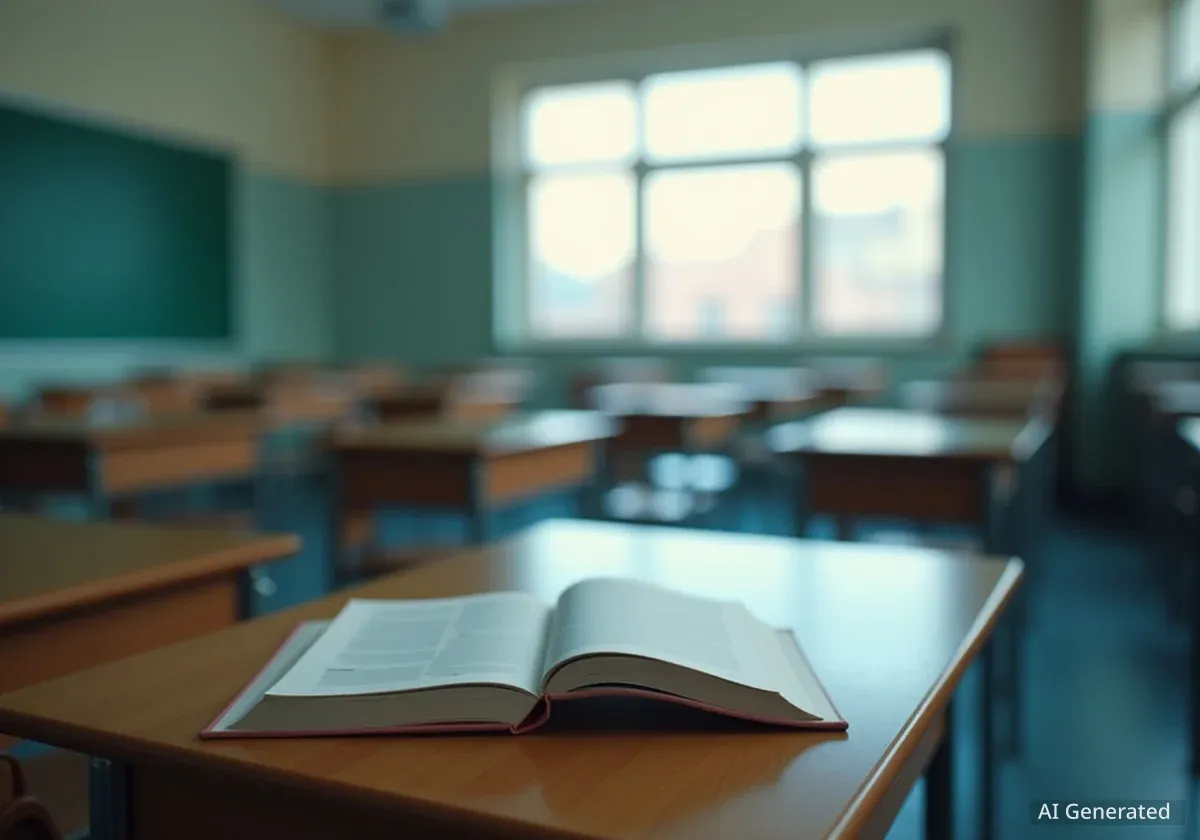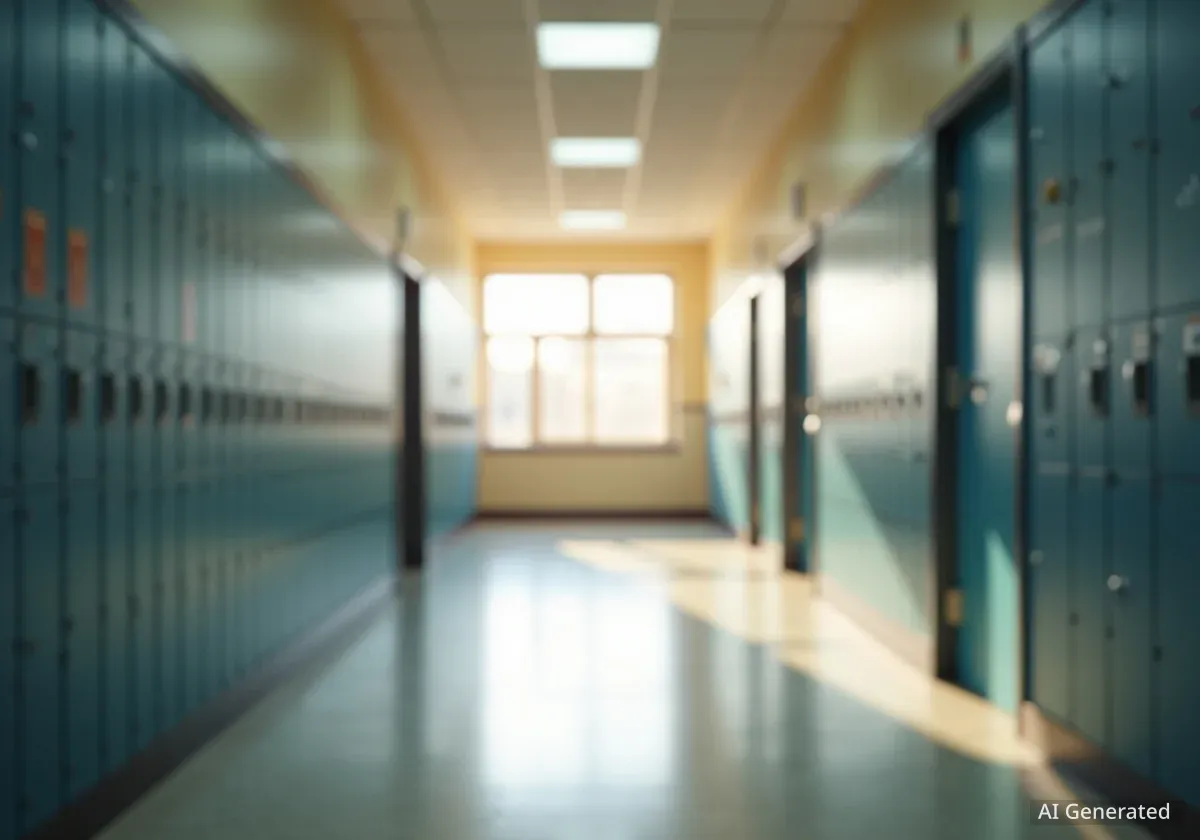Maine's student academic performance has been on a downward trajectory for more than a decade, with new analysis revealing that some of the state's most vulnerable students are falling behind at an accelerated rate. Once a leader in national education metrics, the state now finds itself at or below the national average in key standardized tests.
While the COVID-19 pandemic has been linked to learning loss nationwide, data from the National Assessment of Educational Progress (NAEP) shows Maine's issues began much earlier. A comprehensive review of test scores spanning two decades indicates a significant and widening gap, particularly for low-income students and children with disabilities.
Key Takeaways
- Maine's student test scores have been declining for over a decade, a trend that started long before the pandemic.
- Students with disabilities and those from low-income households have experienced the most significant drops in performance since 2007.
- The percentage of students with disabilities meeting at least a basic understanding in core subjects fell by more than 32 percent.
- Maine's overall performance in reading and math now sits at or below the national average, a sharp contrast to its previous standing.
A State-Wide Slide in Academic Achievement
For years, Maine was considered a strong performer in national education rankings. However, recent data paints a different picture. An analysis of NAEP scores shows a persistent decline that began around 2007 and has continued to the present day.
Between 2007 and 2024, the proportion of all Maine students achieving at least a 'basic' level of understanding in reading and math dropped by more than 14 percent. This 'basic' level signifies that a student has a partial, but not complete, grasp of fundamental grade-level concepts. For example, a fourth-grader at this level can make simple inferences from a text.
The decline is not just at the bottom. The percentage of students reaching the 'proficient' level—the standard identified as the goal for all students—also began to fall between 2013 and 2017. This indicates that even students who were previously demonstrating a solid understanding of challenging material are now struggling more.
Understanding NAEP Performance Levels
The National Assessment of Educational Progress (NAEP) categorizes student performance into four levels:
- Advanced: Mastery of complex skills and knowledge.
- Proficient: Solid academic performance and competency over challenging subject matter.
- Basic: Partial mastery of fundamental skills.
- Below Basic: Inability to demonstrate even fundamental knowledge.
The goal set by the National Assessment Governing Board is for all students to reach at least the proficient level.
Vulnerable Students Facing Steepest Declines
The most concerning aspect of this trend is the disproportionate impact on specific student populations. The data reveals that students with disabilities and those from economically disadvantaged backgrounds have seen their academic performance fall far more dramatically than their peers.
Since 2007, the percentage of students with disabilities meeting the 'basic' performance threshold has plummeted by over 32 percent. In some subjects, the decline for this group exceeded 40 percent. These students, who may have conditions like autism or dyslexia, receive specialized learning plans but are still falling further behind.
Similarly, low-income students have experienced a significant setback. The share of this group reaching at least the 'basic' level fell by more than 23 percent over the same period. This category includes children from low-income households, those experiencing homelessness, or those who qualify for free and reduced-price lunch programs.
A Stark Comparison: Fourth-Grade Reading
The increase in students performing at the lowest level, 'below basic,' highlights the growing crisis. In 2007, 59% of fourth-graders with disabilities tested 'below basic' in reading. By 2024, that figure had jumped to 78%. For low-income fourth-graders, the number of students at the 'below basic' level rose from 41% in 2007 to 59% in 2024.
The Widening Achievement Gap
The data clearly shows that while the top tier of students remains relatively stable, the bottom is expanding. The percentage of Maine students performing at the 'advanced' level has remained consistent, typically between 2 and 10 percent, depending on the subject and grade. This suggests that high-achieving students have largely been insulated from the factors driving the overall decline.
However, the number of students categorized as 'below basic' has grown substantially. This means more children are leaving elementary and middle school without the fundamental reading and math skills necessary for future success. This widening gap between the highest and lowest performers presents a significant challenge for educators and policymakers across the state.
Other Groups Also Struggling
While the data is most consistent for low-income students and those with disabilities, other groups have also shown signs of struggle. Black students and English language learners have also recorded significant losses in test scores. However, inconsistent data collection for these smaller demographic groups over the years makes long-term trend analysis more complex.
The overall trend confirms that Maine's educational system is facing a systemic challenge that predates recent disruptions. As the state moves forward, addressing the specific needs of its most vulnerable students will be critical to reversing this long-term academic decline and restoring its position as a leader in public education.





